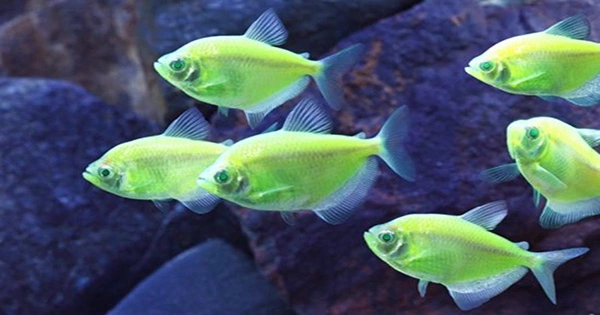With the finding of glow-in-the-dark fish in Brazilian natural rivers, those fearful that transgenic living forms would escape containment and show the end of nature may believe their worries have been validated. However, zebrafish that have been genetically engineered for luminescence appear to be less harmful than many other invasive species, and maybe no worse than unmodified zebrafish. Even the beautiful hues of tropical reef fish aren’t bright enough for some folks. As a result, zebrafish with genes for producing fluorescent proteins have found a ready market in the home aquarium market.
Unfortunately, neither aquarium fish owners nor sellers are always prudent with their assets, and at least 70 non-native aquarium fish have been discovered in Brazilian inland waters alone, with 31 of them having successfully established themselves in their new environments. Glow-in-the-dark zebrafish have now been added to the list, according to a report published in Studies on Neotropical Fauna and Environment. Scientists frequently use zebrafish as a model animal because they are simple to maintain in the lab, the larvae are transparent, and we know a lot about their genetics. The National University of Singapore demonstrated in the late 1990s that adding genes from jellyfish and sea anemones to zebrafish made them light red and green, respectively.
Yorktown Technologies, based in Texas, spotted a market and began offering GloFish® soon after, expanding the spectrum of colors available. Since then, several different luminous aquarium fish have been on the market, employing zebrafish and other species. Glow-in-the-dark fish have been seen in the wild since 2013, and transgenic fish have been outlawed in Brazil since 2017, although the rule isn’t implemented.
Five streams in Brazil’s Paraba do Sul freshwater ecoregion were surveyed by Dr. André Magalhes of the Universidade Federal de Sao Joa Del Rey and co-authors. The location was chosen because it is close to a large ornamental aquaculture facility where fish have been known to escape during water discharges and establish themselves in neighboring waterways. The zebrafish thrive in the warm, somewhat constant climate.
Red zebrafish were detected in four sites and green zebrafish in three, but only two streams had enough of them to warrant further investigation. Both types of fish, notably the green strain, have a diverse diet in their stomachs, including aquatic invertebrate larvae. They looked to be capable of reproductive for most of the year, and as prolific breeders, their numbers have the potential to explode quickly. On the other side, the authors discovered a scarcity of young fish, which they ascribe to a lack of the vegetative regions where zebrafish larvae normally flourish.
The scientists are concerned that if GloFish® populations become large enough, they may represent a hazard to native invertebrates or outcompete local species. Although they were no predators in the seas where they were discovered, the colors might attract unwanted attention if they spread. There’s no reason to believe GloFish® is worse for the environment than wild-type zebrafish, and a 2015 research found the luminous proteins to be a disadvantage in the wild. However, any species that lacks native predators might be devastating in a new habitat, and it’s impossible to rule out the potential that one color or another will aid transgenic animals in taking over.
















